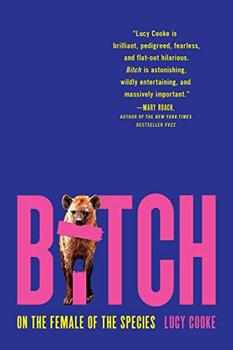Summary | Excerpt | Reviews | Beyond the Book | Readalikes | Genres & Themes | Author Bio

On the Female of the Species
by Lucy Cooke
'Sexual differentiation isn't about describing how you get females and males. It's only about describing how you get males. For decades people were happy not to have an explanation of how you get the female form and just saying, "Well, it's passive,"' Drea asserted.
A foundational publication on mammalian sexual development from 2007 referred to the development of the ovary as 'Terra Incognita'. The prevailing view that ovarian development is the 'default' state had, it claimed, led to 'a widespread understanding that no active genetic steps need to be taken to specify or create an ovary or female genitalia'. Which, the authors wryly note, is 'a rather amazing situation given the importance of this organ for proper female development and reproduction'.
Things are improving. The unknown land of ovarian development has now been partially explored, but its genetic map is far emptier than the one that exists for testes. The chauvinistic hangover of the Organizational Concept has focused the genetic quest for sexual determination firmly on the male; at its core was the hunt to find the elusive testis-determining factor, the genetic trigger that instructs those neutral fetal gonadal cells to rouse themselves out of their sexually indifferent slumber and transform into testes (and start pumping out testosterone).
The genetic recipe that actually determines the sexes is, however, positively byzantine in nature and features an ancient cast of surprisingly androgynous genes.
CHAOTIC CHROMOSOMES
You might think the ultimate answer to what makes a female animal is a pair of XX chromosomes. We're all taught in school, after all, how this anomalous pair of sex chromosomes defines the sexes, with males being XY and females XX. But sex is never that simple.
The XY sex-determination system is best known because it occurs in mammals, along with some other vertebrates and insects. In this system females have two copies of the same sex chromosome (XX), whereas males have two kinds of sex chromosomes (XY). The first misconception is that the letters X and Y refer to the shape of the chromosomes. All chromosomes are sausage-shaped and their resemblance, when paired, is entirely coincidental.
The very first X chromosome was discovered in 1891 by Hermann Henking, a young German zoologist who noticed something curious while inspecting the testicles of a fire wasp (which, to add further confusion, is a bug not a wasp). Chromosomes inhabit cells as matching pairs, but Henking noticed that in all the specimens he studied there was one chromosome that didn't appear to have a matching partner and remained aloof. He named it X – the mathematical symbol for unsolved – after its mysterious nature. Henking made no association between this now iconic, yet enigmatic, strand of DNA and sex determination, which is a shame as it could have made him quite famous. Instead, a year later, he abandoned his cytology studies and moved on to a career in fisheries, which was more financially rewarding but offered significantly less opportunity for scientific fame.
The Y chromosome was eventually discovered lurking in the reproductive organs of a mealworm some fourteen years later, in 1905, by the American Nettie Stevens – a pioneering female geneticist. Stevens recognized its key role in sex determination, but also received little fame for her epic breakthrough. The same chromosome was also discovered, more or less simultaneously, by a male scientist called Edmund Wilson, who sucked up most of the fame. It was eventually named Y to continue the alphabet system that Henking had started. But thanks to its peculiar stunted size, it also resembles the letter that provides its name when paired with the longer X.
Compared to the X, the Y is essentially a runt of a chromosome: stunted and with significantly less genetic material. When it comes to chromosomes, however, it's not size that matters, it's what you code with it. And the Y is indeed home to a very significant sex-determining gene called SRY (standing for Sex-determining Region of the Y).
Excerpted from Bitch by Lucy Cooke. Copyright © 2022 by Lucy Cooke. Excerpted by permission of Basic Books. All rights reserved. No part of this excerpt may be reproduced or reprinted without permission in writing from the publisher.
Your guide toexceptional books
BookBrowse seeks out and recommends the best in contemporary fiction and nonfiction—books that not only engage and entertain but also deepen our understanding of ourselves and the world around us.